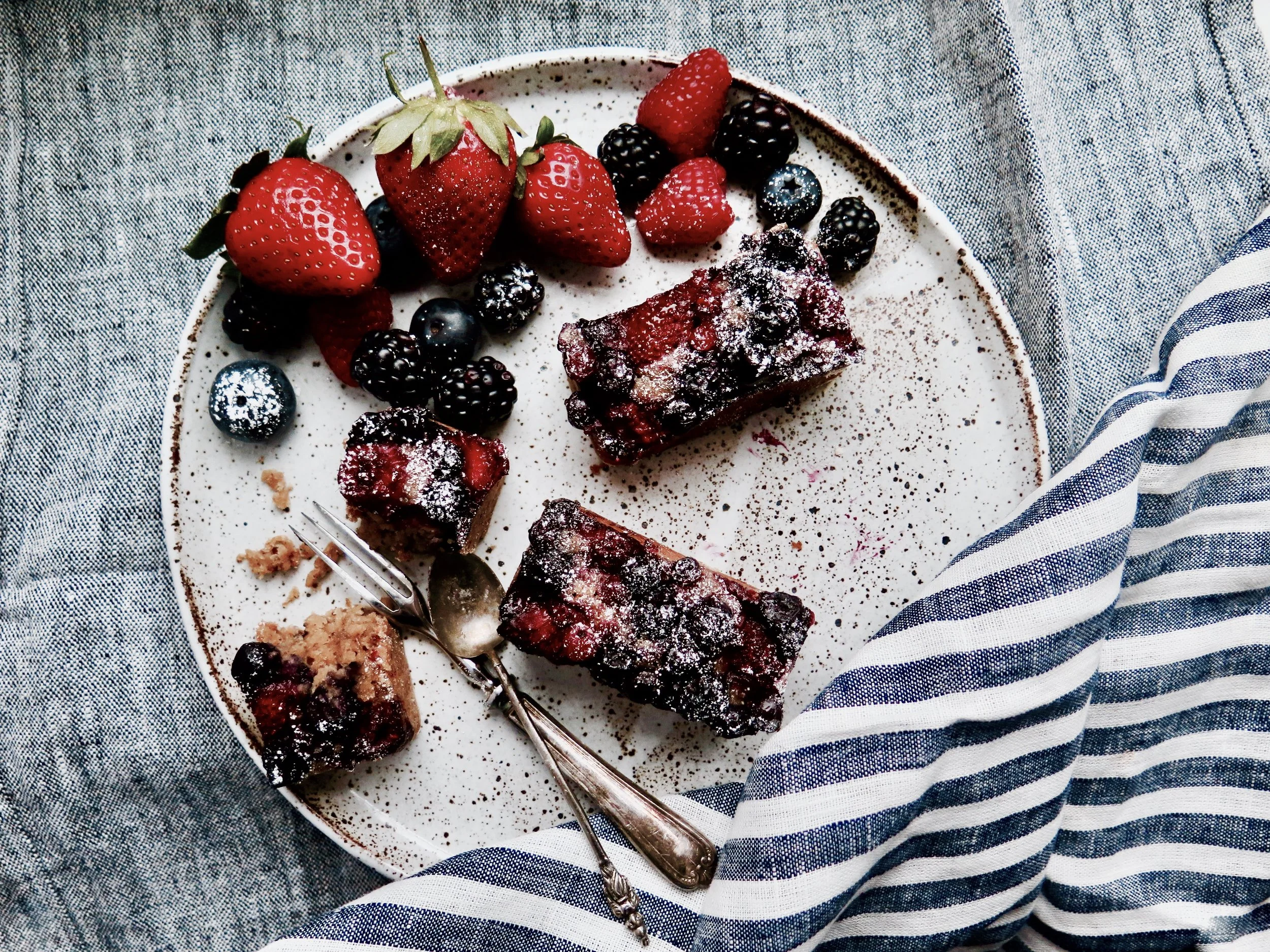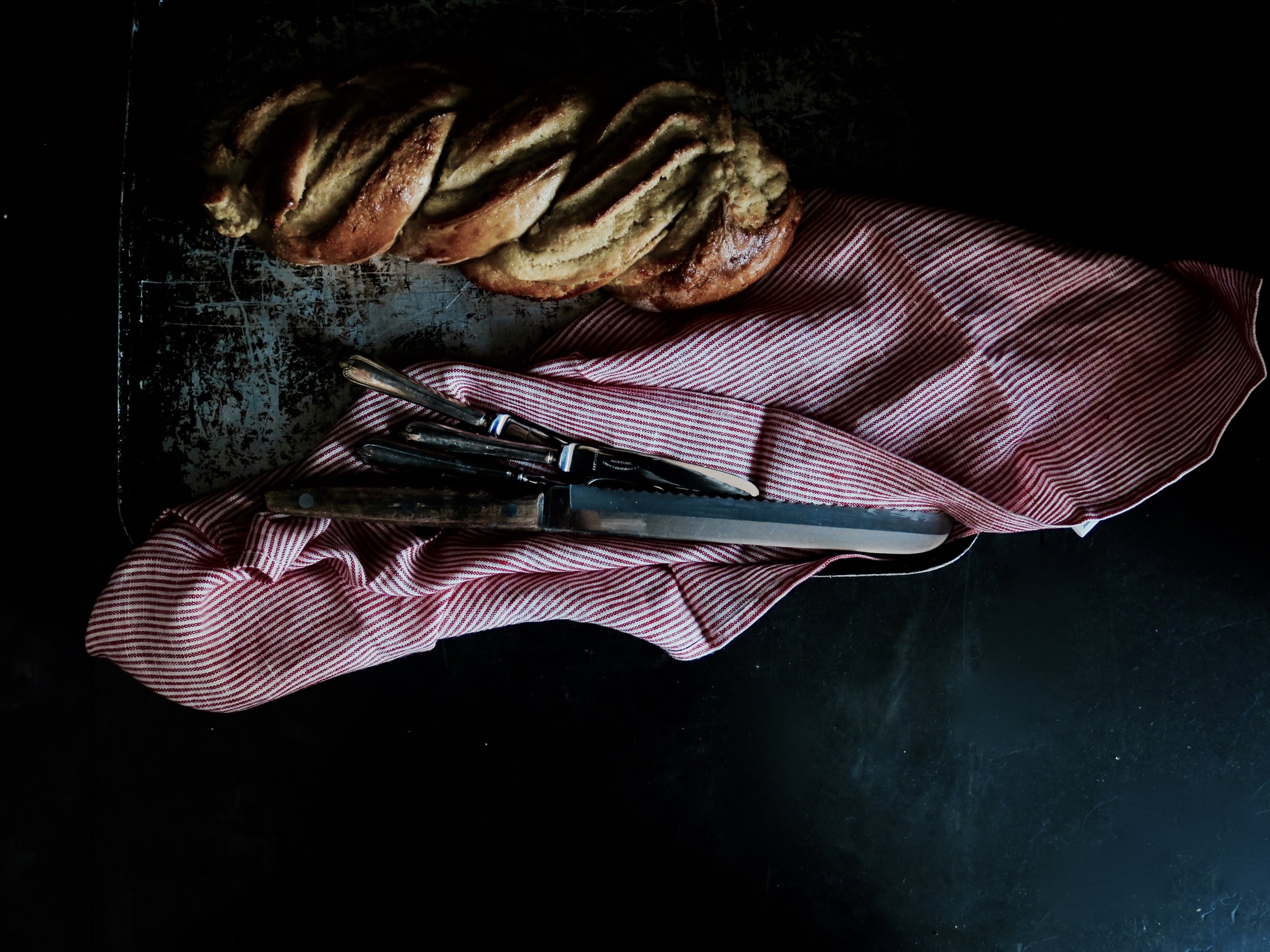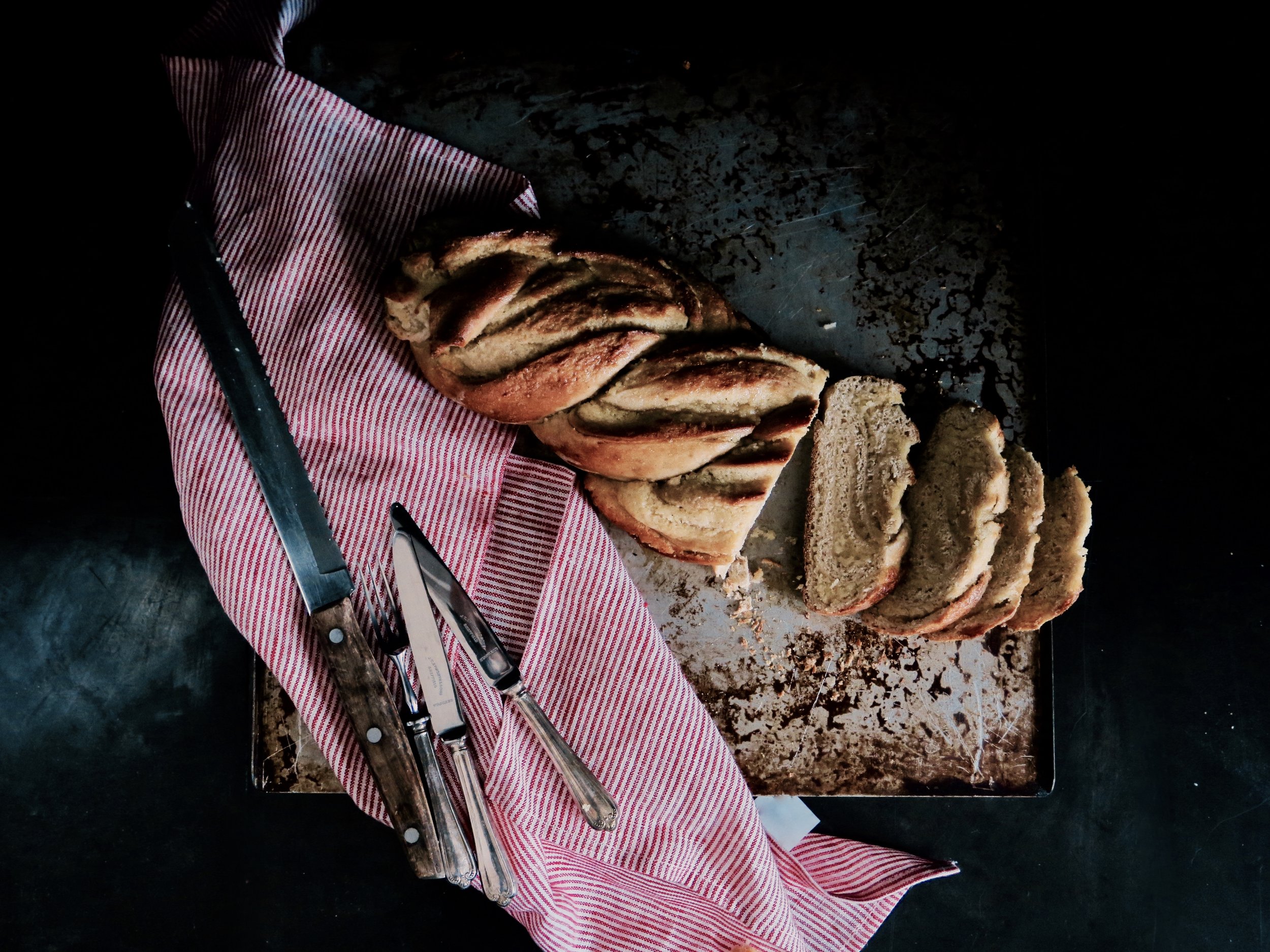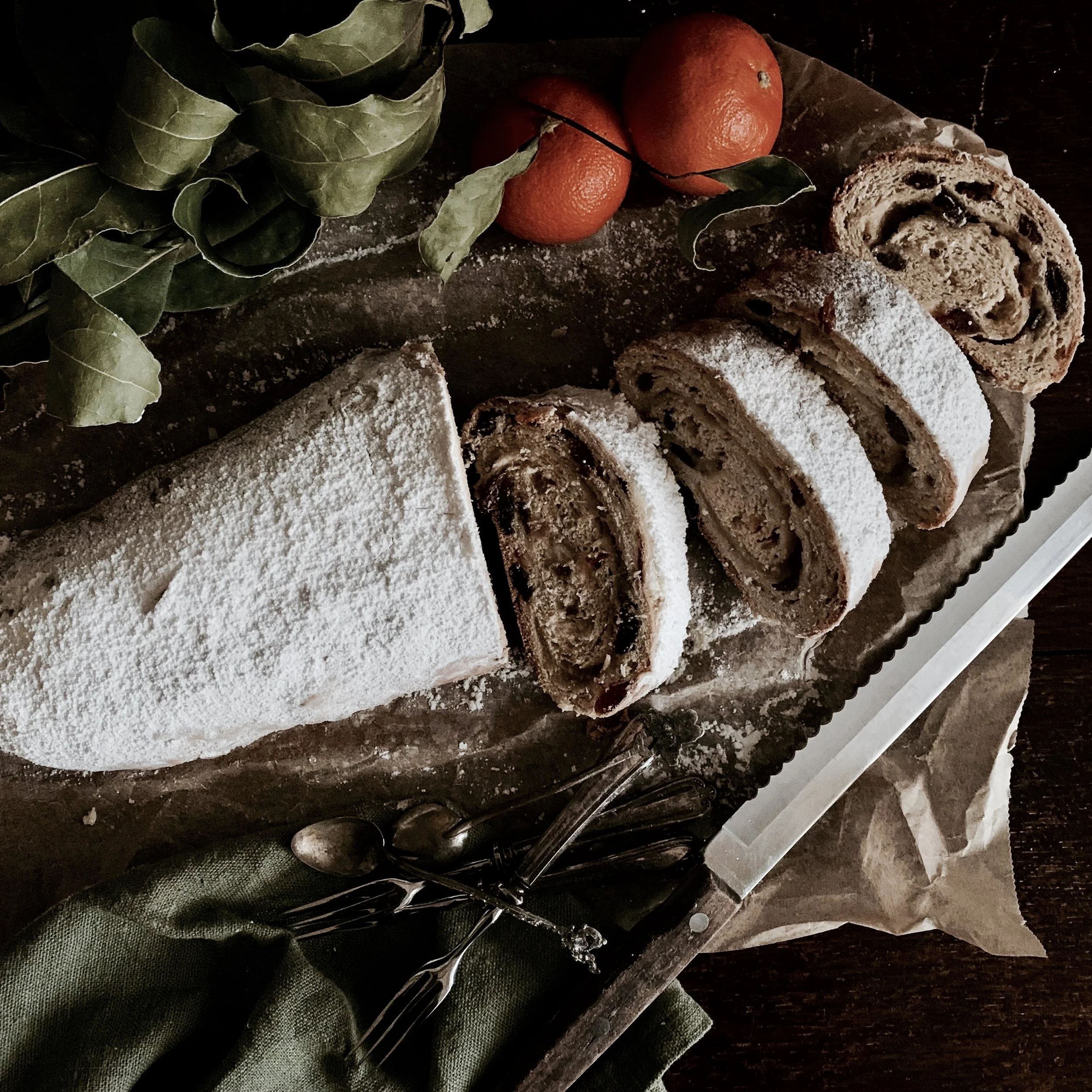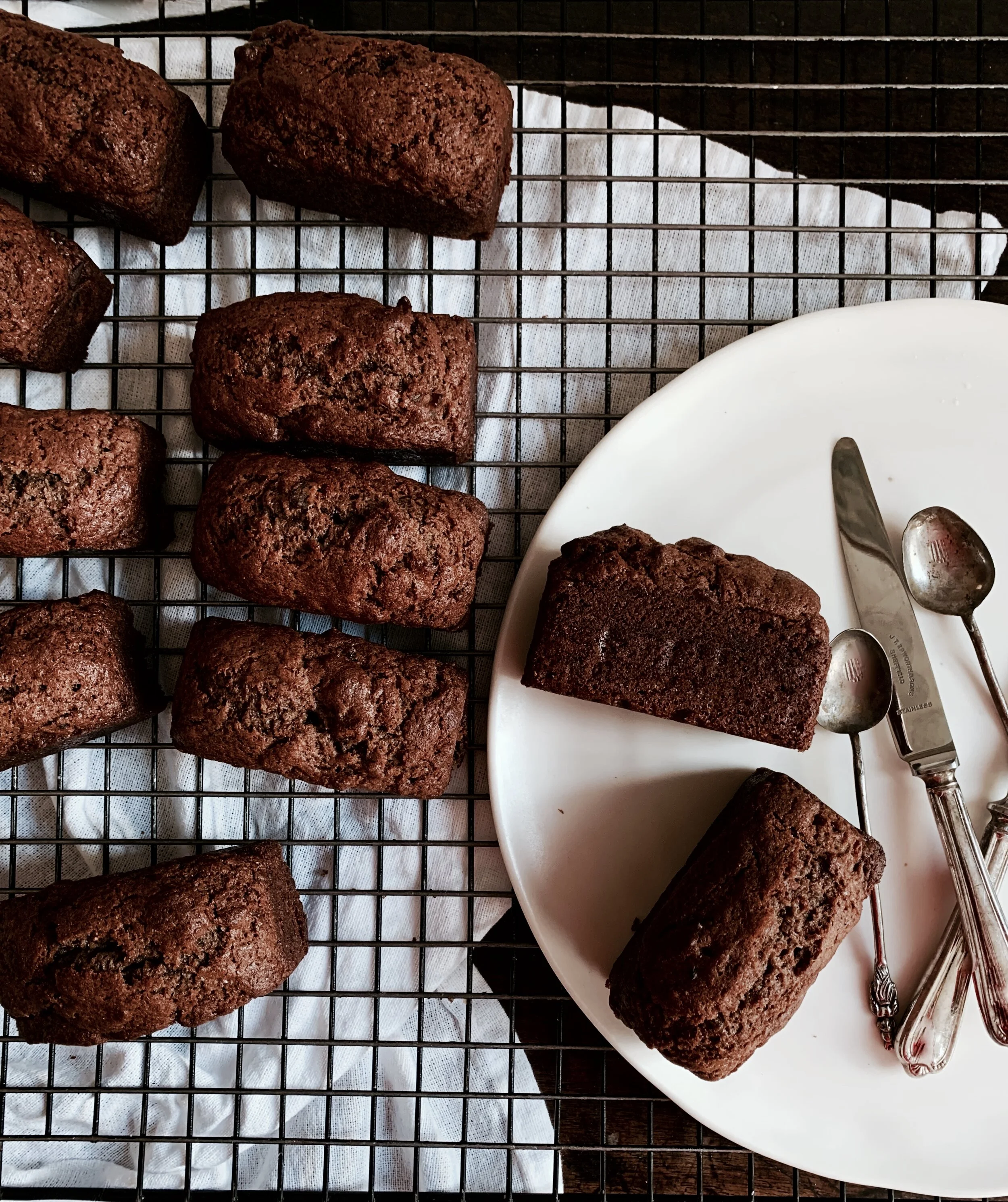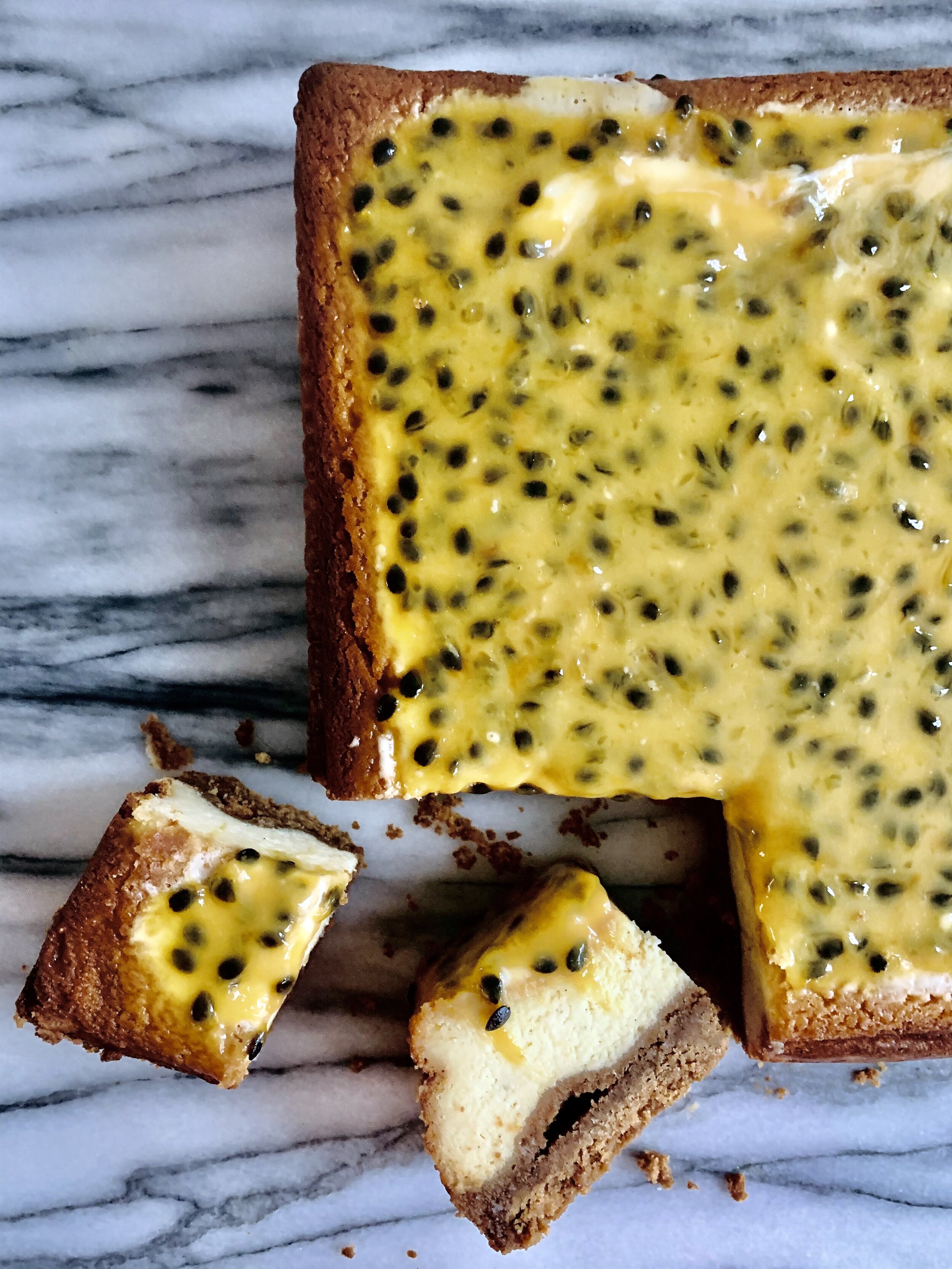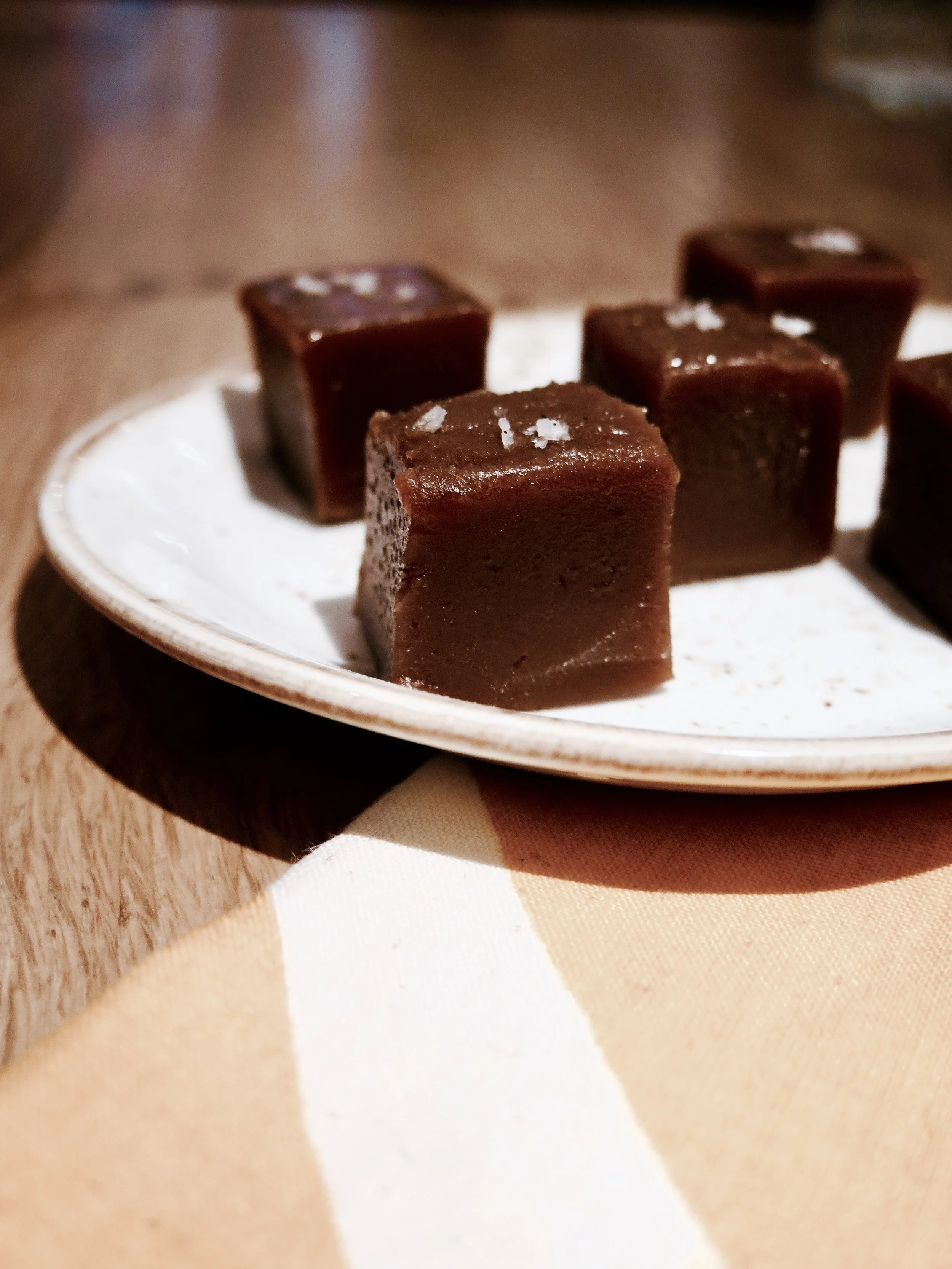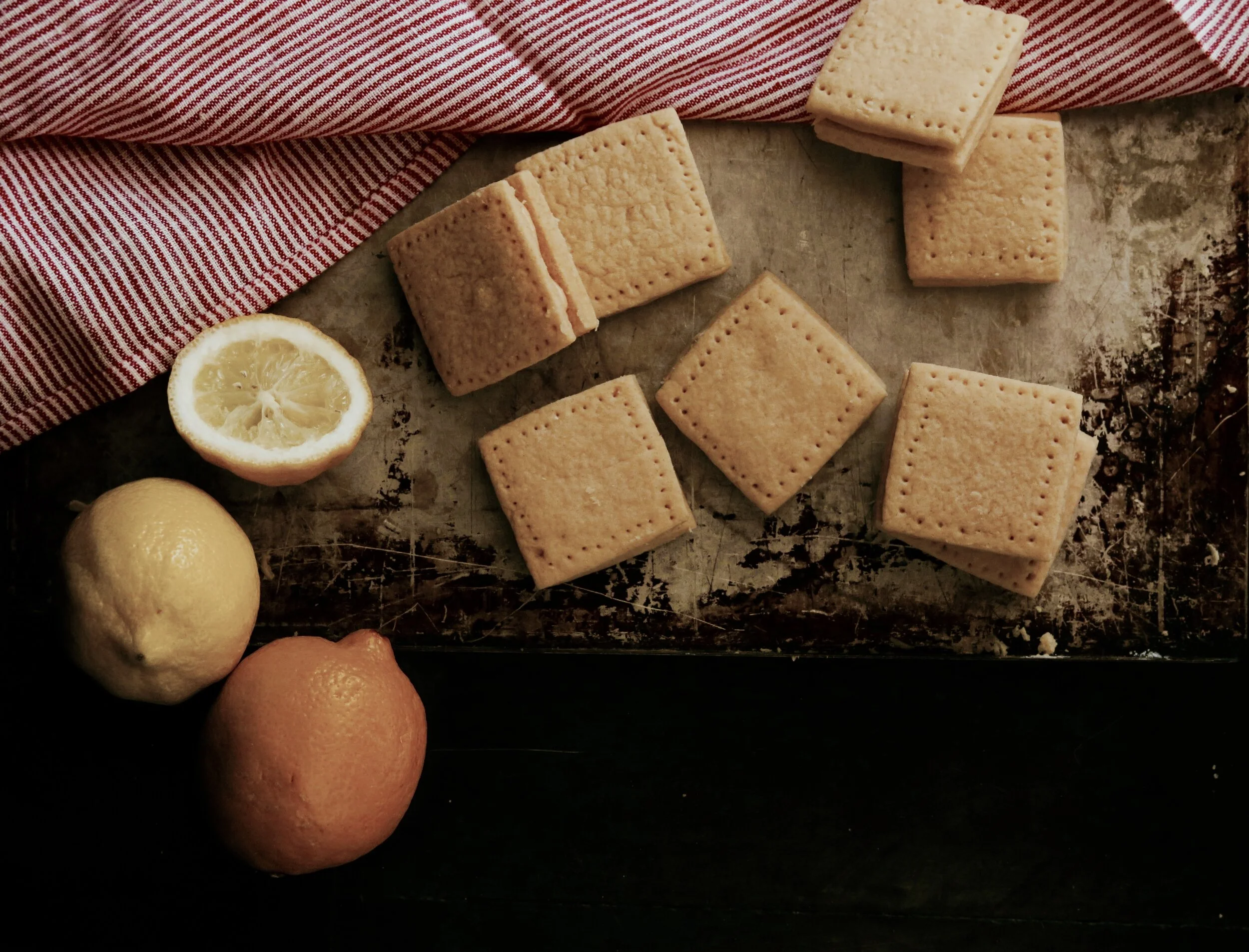The ideal combo of oatmeal, pancake and muffin. They’re protein and fibre-full and naturally sweet (no refined sugar), bursting with berries (zero dryness here) and filling. They’re quick to make, and super convenient as they can be made in advance, frozen and defrosted when cravings strike. They also look rather irresistible on any breakfast table, so great for when you have guests.
Viewing entries tagged
brunch
This bread is the love child of a brioche and stollen. The dough is soft, buttery and ridiculously moreish. And the filling is like that marzipan core of stollen except less overpoweringly almondy, lighter and less tooth-achingly sweet (which means you can have more of it, of course). One of my many intolerances is not gluten, nuts or dairy but overpromising. If the title promises a filling, I want that filling, and I want it in abundance. If it says caramel, I want luscious rivers of it; if it’s olives on a pizza, I want at least one for every 2cm squared (NB I am disappointed by this every time - unless I make it myself). And, if it is a frangipane bread, I demand every mouthful to be molten with frangipane.
So, in response, this bread will not fail to meet expectations: not only a show stopper in appearance, it is also ambrosial. I had to make this several times in order to photograph it before it was inhaled by surrounding friends/family.
If you want to have plain bread, just leave out the frangipane and follow the instructions below. Similarly, if you’re feeling experimental add another filling in place of the frangipanes - think Nutella, marmalade, fruit conserve…
Ingredients (makes 2 loaves)
For the bread
30g fresh yeast (or 15g dry yeast)
100g caster sugar
250ml lukewarm milk (normal or any non-dairy alternative)
2 large eggs, beaten
1 tsp salt
700g white spelt flour (or plain wheat) + more for kneading
100g unsalted butter, at room temperature
For the frangipane
180g caster sugar
150g unsalted butter, at room temperature
4 eggs
½ tsp salt
250g ground almonds
1 ½ tsp almond extract
2 large baking sheets lined with baking parchment
Method
1) In the bowl of an electric mixer (or large mixing bowl), cream together fresh yeast and caster sugar until the sugar begins to dissolve and turns the yeast liquid. If using dry yeast, add it into the milk first and allow to sit for five minutes before continuing with step 2.
2) Pour in lukewarm milk, 3/4 of the beaten eggs (i.e. 1 ½ eggs, keeping the other half aside to paint the bread) and salt, and whisk together. Whisk in 100g grams of the flour to begin to incorporate air.
3) Add the remaining flour into the mixture and mix together. Once combined, either using a mixer fitted with the dough hook, or on a heavily floured surface knead the dough for about 5 minutes until it is smooth and bounces back when pressed with your thumb. Temperature and humidity can affect the dough texture so you may need to add a touch more flour if it is truly unworkable, though try to keep it to a minimum as too much will make the bread tough and the dough difficult to roll out. I find that using the dough hook initially until combined and then kneading by hand for the last stretch particularly effective.
4) Place in a large oiled bowl in a warm spot and cover with a cloth or clingfilm to allow to rise until doubled in size (about 45 minutes to an hour).
5) At this point, if you wish to make the bread without the frangipane, proceed to step 7a
6) To make the frangipane, beat together the sugar and butter until light and fluffy. You can do this by hand or in a mixer fitted with the paddle attachment. Beat in the eggs (don’t worry if it looks slightly curdled at this point), then stir in salt, ground almonds and almond extract. It should be a smooth almondy paste.
7) Once the dough has risen, punch back down, turn it onto a heavily floured surface
a. For bread without filling: divide dough into two (to make two loaves). Shape as desired, but if you favour a plaited loaf, as I do, taking one of the dough halves, divide it into three or four pieces (depending on whether you prefer a three- way or four-way plait.) Roll each piece into a long, even strand of about 3cm in diameter. Then pinch the ends together and plait as normal. When you reach the end of the plait, pinch the strands together and tuck under. Repeat for the second loaf, place on a baking tray and cover. Leave to rise for about half an hour.
b. For bread laced with frangipane: place the dough on a large, flat, heavily floured surface and roll it to a rectangle of about 60 x 30cm and about ¾ cm thick. Tip the frangipane mixture into the centre of the dough, and spread it out evenly with a spatula right up to the edges. Then, from the long side, roll the dough to make a long tight coil. Finish with the seal at the base of the roll. Then slice the roll into two (in order to make two loaves). Take one long roll and holding the knife directly above the roll, with the blade parallel to the length of the roll, bisect it running the knife through the centre along the its length. Once split, with the open halves separate, pinch them at the top and then cross one over the other repeatedly in a kind of two string plait. Pinch at the end and tuck it under then place on baking tray. Repeat with the other half.
8) Cover both breads with a cloth, and allow to rise in a warm place for 45 minutes. Preheat the oven to 200 °C.
9) With the remaining beaten egg, brush the tops of the breads. Place the breads in the oven to bake for 10 minutes. Then reduce the oven temperature to 180 °C and allow to bake for a further 10-15 minutes. Ovens can be temperamental, so check every 5-10 minutes to ensure that the bread doesn’t burn. If it looks like it is beginning to catch, cover with aluminium foil and continue to bake. Remove from the oven when the outside is a deep golden colour. Place on a cooling rack and allow to reach room temperature, then devour. Best eaten on day of baking, but the bread can be frozen in a sealed air tight container for up to 3 months.
HUNGRY FOR MORE?
Rovi is everything Palomar is not.
Palomar is dark and claustrophobia-inducing. You have to squeeze past ten diners’ bums on bar stools to enter the restaurant, itself a tight, gloomy, un-windowed space. Rovi is spacious, vibrant and airy, the tables circling the room with enough space between them to avoid conversation leakage. The waiters are friendly and attentive without being overbearing, and the open kitchen flashes in the background, fulfilling the promise of the restaurant concept of “fire and fermentation”.
I’ve had multiple debates about small plates, my distaste for them reaching fresh heights at Palomar. Done badly (as in the aforementioned restaurant), they are lazy and mean. In the case of Rovi, however, the opposite is true.
The meal started with hot spiced butter beans that melted on the tongue. They were an on- the-house opener, which was a nice touch. These were swiftly followed by the tempura stems with Szechuan, mandarin and kaffir lime vinegar, the batter so light and so crisp that I crunched my way out of previous tempura-ambivalence.
The spaghetti squash followed, its rich, sweet resplendence counterbalanced with the cold zestiness of the ezme and mandarin yoghurt. Next came the hasselback beets - lifted from their unassuming earthy roots, caramelised and roasted without being messed around with unnecessarily.
I hate to bore you with endless eulogizing but I cannot fail to mention how the red cabbage was glorious with little pops of sweetness from the grapes, or how the celeriac shawarma was so cleverly elevated from the oft-scorned and rejected vegetable that often assumes a mouldy jacket in the bottom of my fridge, to a crispy, umami, centre stage.
Dessert came in the form of fig clafoutis, olive oil and lemon ice cream, and plum and juniper doughnuts, bay leaf cream, and almonds. All was delicate and light, sweet, but not teeth –curdlingly so. But the winner was the salted miso caramels, so good that if I concentrate hard enough I can summon up again their umami, caramelized fudgy- sweet/ savouriness.
Unfortunately, I can’t conjure up any negatives to indulge anyone's schadenfreude (if you’re looking for that, click here). I can, however, thoroughly recommend the well-balanced, carefully flavoured food served in Rovi. This is Ottolenghi at his best, contrasting textures, flavours and temperatures, and pushing ingredients to their limits.
Price: ££££
Service: 9/10
Food: 10/10
Ambience: 8/10
Loos:10/10
Good for: brunch, family lunch, vegetarians, vegetable-lovers, Ottolenghi obsessives, healthy eating

